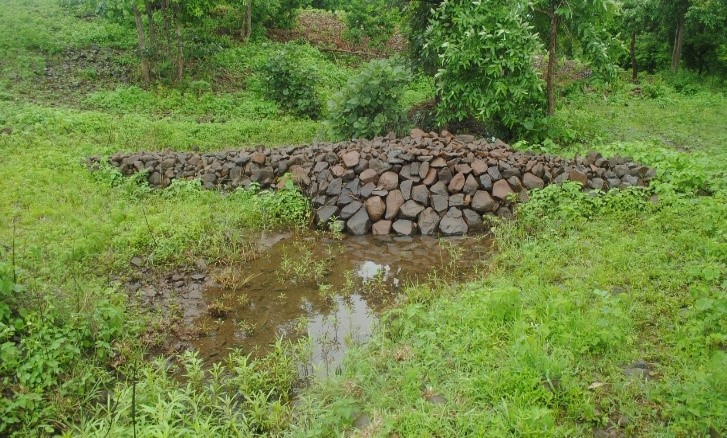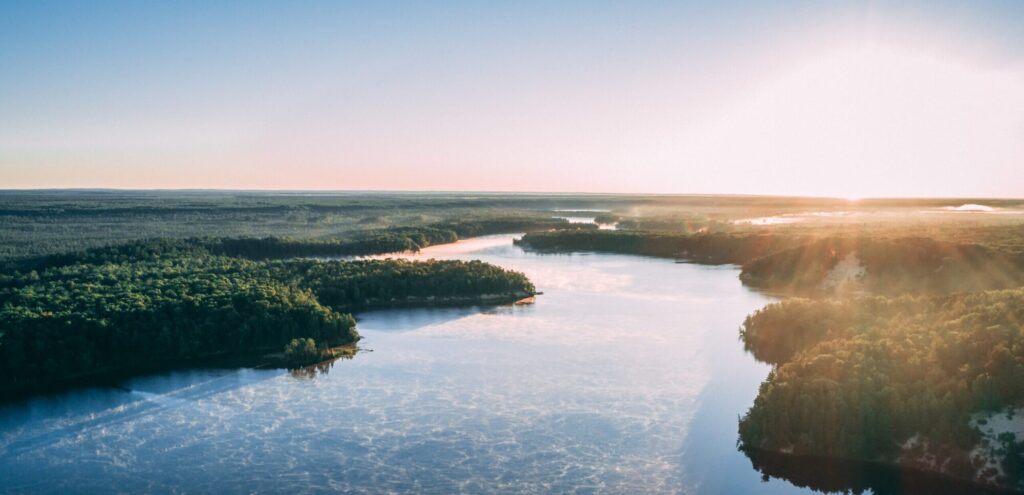As an inhabitant of Marathwada region wherein the consequences of Drought situation prevail, UGAM has been working to mitigate them through Watershed management.
The core principle is to harvest every drop of rain water and its conservation through various structures; gradually enhancing the water table and transition to a green geography. Follow up with Development activities like Water Budgeting together with the community involvement shall facilitate in the sustainability of the intervention.The execution of the work follows a ‘Ridge to Valley’ approach wherein the intervention structures like Continuous Contour Trenches (CCT) and Upper-Level Loose Boulders are constructed at the hill-tops and slopes. Middle Level and Lower-Level Loose Boulders helps in directing water in streams. Once the water reaches in a stream, rain water harvesting structures as in Cement Nala Bandh (CNB), Mati Nala Bandh (MNB), Shirpur/Dove model, Budki model, Farm ponds are being constructed which act as reservoirs followed by Vanrai Bandhara down the valley.

Dove Model
The Treatment prevents soil erosion and enhances ground water recharge enhancing the water table to rise. Water availability has direct impact on agriculture and can be visualized through the increase in the area under cultivation. Capacity building of farmers has made them aware and they are now applying drip-irrigation and sprinklers to prevent wastage of water and growing traditional food crops like jowar, oil-seeds instead of sugarcane that require more water.

Continuous Contour Trenches (CCT)
CCT is an upper level at Ridge line intervention. It is to be taken at flat level as well slope up to 5 % with depth of 1.5 feet. This treatment prevents the speed of the water flow and allows percolation of water preventing evaporation of water stored in the trench. These are made step wise
Loose Boulders
Loose Boulders are water harvesting treatment done in the hilly terrain along the flow of small streams. Stone boulders are collected manually and if large in size through machines and accumulated to create a wall. This prevents the speed of flowing water and enhances water percolation and are made step wise.
There are Upper level, middle level and lower level Loose Boulders.


Budki Model
While there was a good water table level there were some natural sources which use to provide water for animal and human being in summer also as day by day water table is gown down and down. The Budki place being a natural site is already in existence only this structure is dried up. What is required is to desilt, deepen and widen the structure to increase its water impounding capacity. Deeping and soil erosion stopping treatment around the structure is needed. It is very low-cost structure.
Cement Nala Band (CNB)
Most of the existing rainfall water flows at downstream. It gets wasted carrying fertile soil along with. Once the rain stops, the stream gets dried up. This flowing water needs to be prevented and the fluidity too needs to be stopped, so the water percolates in the earth.
This treatment requires proper site selection in the planned area where maximum length of the stream is in level and is wider so that maximum water stored can be saved.
Technical survey with technical staff and with dumpy level is to be made to finalize the site location. Procurement of cement stones boulders, sand is needed which exists at the basin of the strata. Construction is done with the help of meson workers. This is very viable and long-life structure and requires hard strata of earth. Water flows from above the cement wall.


Mati Nala Band
This is a most important and viable structure in the plain area where there is no hard strata below the wall. It is to be constructed with the help of black soil and the site location need to be properly surveyed which needs to be soft soil area.
Selection of the location is to be made technical viable by engineers. Only boulders are required for pitching purpose. It is constructed of cement, boulders and the wall is made upto a level, as required in the field. It is made besides the soft, black cotton soil that binds water and acts as an outlet for the water.
Shirpur Model
This treatment has been executed in Shirpur block of Dhule district and has proven that the tube wells and dug wells on the bank of the stream/ river get recharged up to 5 km at both the side of the river and prevents soil erosion and the flow of existing water which otherwise would eventually go in the sea through big rivers.
Alongside the river and stream side the area that needs to be widened up is decided. As per the strata of the stream/river, the depth and width need to be decided which would be done by the help of poclain and Tractors for removal of the soil (desilting).


Farm Pond
This is a most important and viable structure in the plain area where there is no hard strata below the wall. It is to be constructed with the help of black soil and the site location need to be properly surveyed which needs to be soft soil area.
Vanrai bandhara
Post monsoon, naturally water flows and gets wasted. Using sacks of cement, this free-flowing water is stopped and reservoir kind of a structure get formed as water gets collected at a particular place.
This is a very low-cost model and is mostly community driven enhancing participation of scout guides, school students, who actively demonstrate their skills and togetherness.




